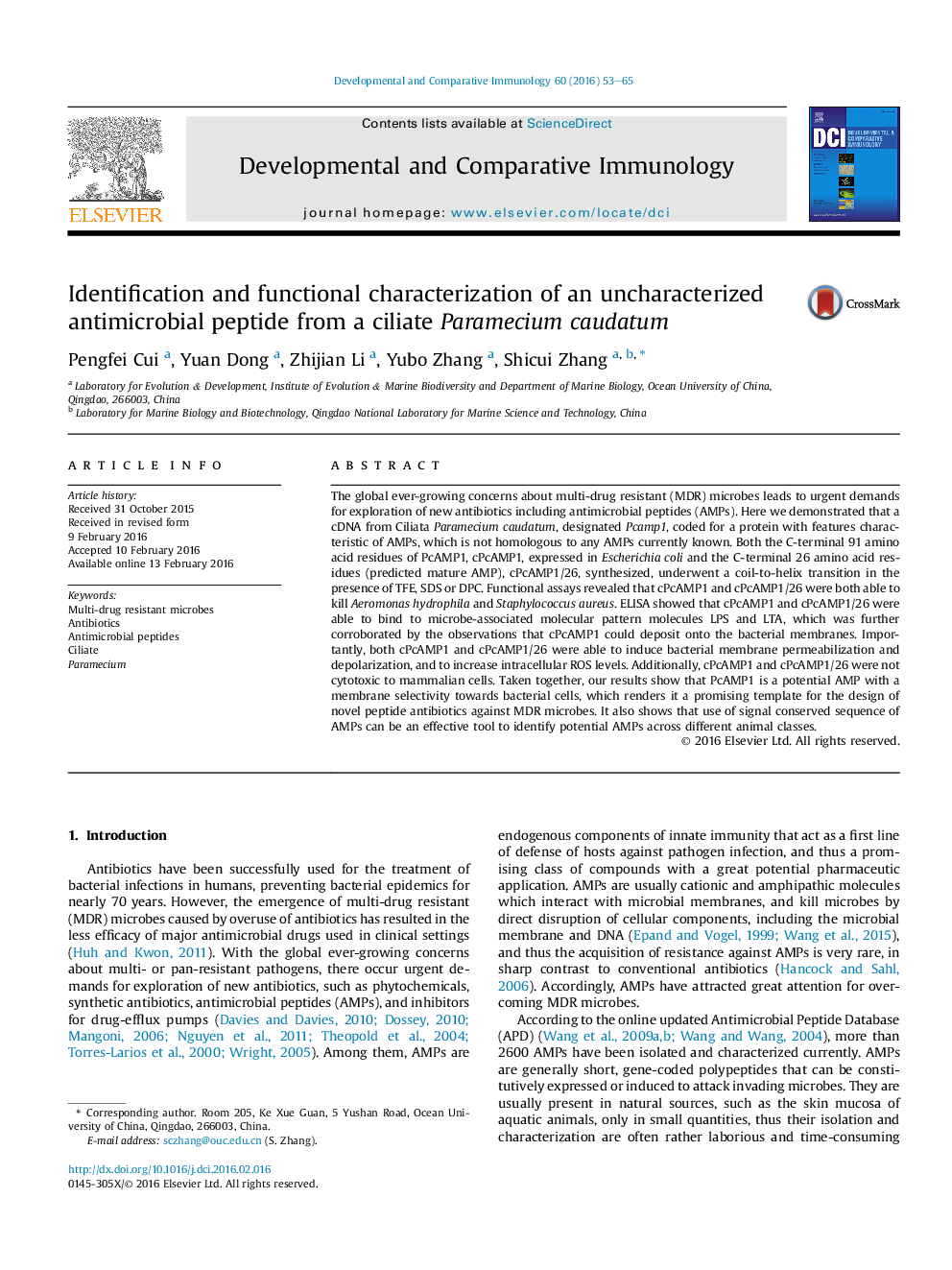| کد مقاله | کد نشریه | سال انتشار | مقاله انگلیسی | نسخه تمام متن |
|---|---|---|---|---|
| 2428799 | 1553572 | 2016 | 13 صفحه PDF | دانلود رایگان |

• A novel AMP cPcAMP1 was identified from Clilita Paramecium caudatum.
• cPcAMP1 and its mature peptide cPcAMP1/26 possessed bactericidal activities.
• They both interacted with microbes via LPS and LTA.
• They both induced membrane permeabilization/depolarization and apoptosis/necrosis.
• They both displayed no cytotoxicity to mammalian cells.
The global ever-growing concerns about multi-drug resistant (MDR) microbes leads to urgent demands for exploration of new antibiotics including antimicrobial peptides (AMPs). Here we demonstrated that a cDNA from Ciliata Paramecium caudatum, designated Pcamp1, coded for a protein with features characteristic of AMPs, which is not homologous to any AMPs currently known. Both the C-terminal 91 amino acid residues of PcAMP1, cPcAMP1, expressed in Escherichia coli and the C-terminal 26 amino acid residues (predicted mature AMP), cPcAMP1/26, synthesized, underwent a coil-to-helix transition in the presence of TFE, SDS or DPC. Functional assays revealed that cPcAMP1 and cPcAMP1/26 were both able to kill Aeromonas hydrophila and Staphylococcus aureus. ELISA showed that cPcAMP1 and cPcAMP1/26 were able to bind to microbe-associated molecular pattern molecules LPS and LTA, which was further corroborated by the observations that cPcAMP1 could deposit onto the bacterial membranes. Importantly, both cPcAMP1 and cPcAMP1/26 were able to induce bacterial membrane permeabilization and depolarization, and to increase intracellular ROS levels. Additionally, cPcAMP1 and cPcAMP1/26 were not cytotoxic to mammalian cells. Taken together, our results show that PcAMP1 is a potential AMP with a membrane selectivity towards bacterial cells, which renders it a promising template for the design of novel peptide antibiotics against MDR microbes. It also shows that use of signal conserved sequence of AMPs can be an effective tool to identify potential AMPs across different animal classes.
Journal: Developmental & Comparative Immunology - Volume 60, July 2016, Pages 53–65